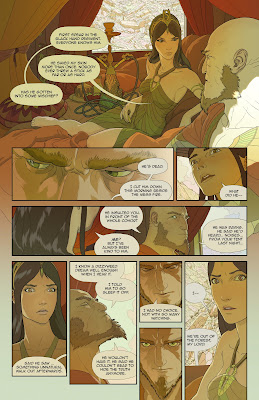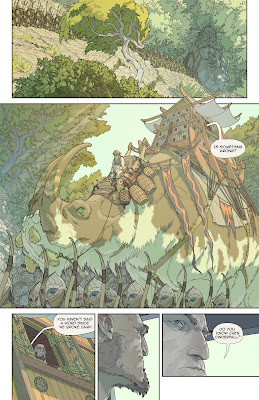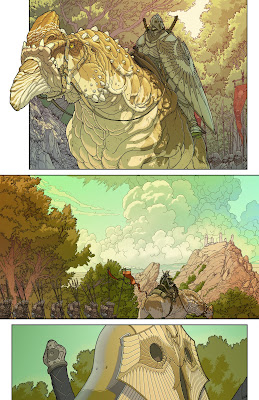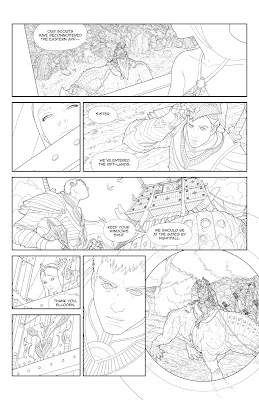Out of Limes

Page 7 first-pass color. Click to enlarge. Below, there will be moping. I spent some time revamping the linework for this page before diving into the color -- that bottom panel has been a big jerkface from the get-go. At some point I'll animate the billions of pose revisions that figure went through. Legs here, legs there, chin here, chin there, arm too skinny, arm too fat -- seen in time-lapse, she'll do quite a jig. Happily, I think I ended up with something fairly inoffensive. The color sort of irks me, though. In the interest of not taking forever, I've decided to leave it for now and come back to it when I've got some new ideas. In other news, I'll be doubling the resolution of my linework (from 3300x5100 to 6600x10200). My computer seems to be able to chew on this mega-bolus as long as I keep the layers reasonable, and I can knock it down to the lower resolution for the coloring pass. In the end, I can blow up the color layers to the higher resolution, and an...











